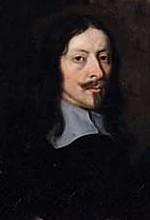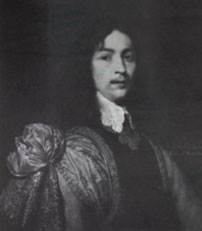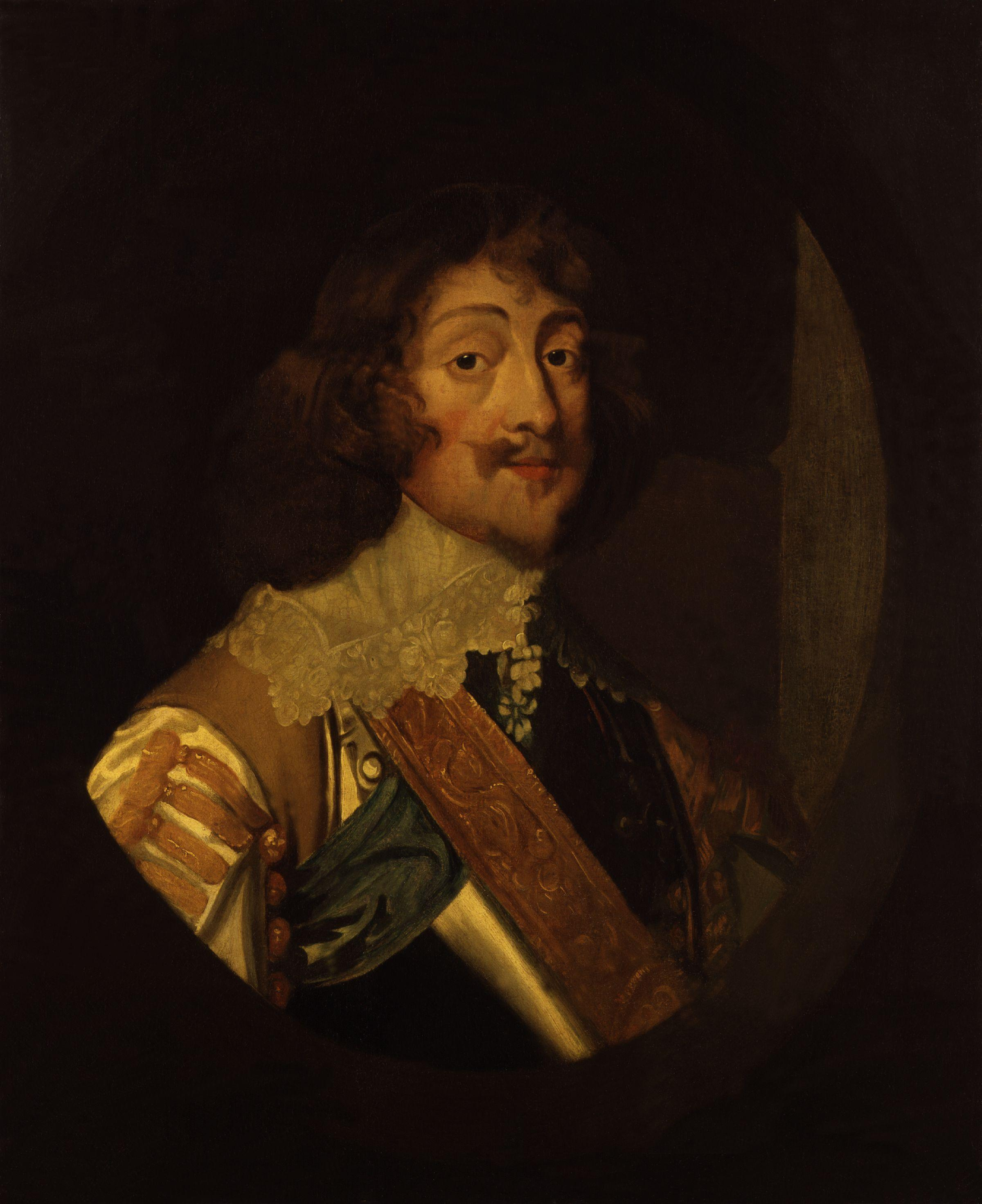|
Gentleman Of The Bedchamber
Gentleman of the Bedchamber was a title in the royal household of the Kingdom of England from the 11th century, later used also in the Kingdom of Great Britain. A Lord of the Bedchamber was a courtier in the Royal Household; the term being first used in 1718. The duties of the Lords and Gentleman of the Bedchamber originally consisted of assisting the monarch with dressing, waiting on him when he ate, guarding access to his bedchamber and closet and providing companionship. Such functions became less important over time, but provided proximity to the monarch; the holders were thus trusted confidants and often extremely powerful. The offices were in the gift of The Crown and were originally sworn by Royal Warrant directed to the Lord Chamberlain. This is an ''incomplete'' list of noblemen who have served as Lord of the Bedchamber or Gentleman of the Bedchamber: Description and functions There were always several holders of the office, who were invariably gentlemen and almost ... [...More Info...] [...Related Items...] OR: [Wikipedia] [Google] [Baidu] |
James Erskine, 6th Earl Of Buchan
James Erskine, 6th Earl of Buchan (died 1640), was the eldest son of John Erskine, Earl of Mar, by his second wife, Marie Stewart, daughter of Esme Stewart, Duke of Lennox. He married Mary Douglas, 6th Countess of Buchan, daughter and heiress of James Douglas, 5th Earl of Buchan, and assumed the title of Earl of Buchan. This title was confirmed by a royal charter, dated 22 March 1617, the countess resigning her rights in his favour, and he was allowed the possession and exercise of all honours, dignities, and precedence of former earls of Buchan. A decree of the court of session, 25 July 1628, restored to Buchan and his wife the precedency over the earls of Eglinton, Montrose, Cassilis, Caithness, and Glencairn, which had been claimed by them, and granted by a former decree in 1606. On the accession of Charles I, Buchan became one of the lords of the bedchamber. He lived chiefly in London, where he died in 1640. He was buried at Auchterhouse, Forfarshire. His wife died befor ... [...More Info...] [...Related Items...] OR: [Wikipedia] [Google] [Baidu] |
William Cavendish, 1st Duke Of Newcastle-upon-Tyne
William Cavendish, 1st Duke of Newcastle upon Tyne, KG, KB, PC (25 December 1676) was an English courtier and supporter of the arts. He was a renowned horse breeder, as well as being patron of the playwright Ben Jonson, and the intellectual group known as the Welbeck Circle. Despite spending the then enormous sum of £15,000 entertaining Charles I in 1634, he failed to gain a significant political post. In the early stages of the First English Civil War, he was appointed Royalist Captain-General in Northern England; he financed much of the war effort himself, later claiming this totalled in excess of £1,000,000. After the defeat at Marston Moor in July 1644, a battle fought against his advice, he went into exile in Europe. He returned to England after the Stuart Restoration in 1660, and although created Duke of Newcastle in 1665, he remained on the fringes of the court, and became critical of Charles II. He died in 1676, and was buried in Westminster Abbey. Personal details ... [...More Info...] [...Related Items...] OR: [Wikipedia] [Google] [Baidu] |
John Maitland, 1st Duke Of Lauderdale
John Maitland, 1st Duke and 2nd Earl of Lauderdale, 3rd Lord Maitland of Thirlestane KG PC (24 May 1616, Lethington, East Lothian – 24 August 1682), was a Scottish politician, and leader within the Cabal Ministry. Background Maitland was a member of an ancient family of both Berwickshire and East Lothian, the eldest surviving son of John Maitland, 2nd Lord Maitland of Thirlestane (d. 1645), (who had been created Viscount of Lauderdale in 1616, and Earl of Lauderdale etc., in 1624), and of Lady Isabel (1594–1638), daughter of Alexander Seton, 1st Earl of Dunfermline and great-grandson of Sir Richard Maitland of Lethington, the poet. Covenanter Maitland began public life as a zealous adherent of the Presbyterian cause, took the Covenant, sat as an elder in the General Assembly of the Church of Scotland at St Andrews in July 1643, and was sent to the Kingdom of England as a Commissioner for the Covenant in August, and to attend the Westminster Assembly in Novemb ... [...More Info...] [...Related Items...] OR: [Wikipedia] [Google] [Baidu] |
Thomas Wentworth, 5th Baron Wentworth
Thomas Wentworth, KB, PC ( bapt. 2 February 16121 March 1665) was an English landowner and soldier who supported the Royalists during the Wars of the Three Kingdoms. At the end of the First English Civil War in 1646, he accompanied the future Charles II of England into exile and fought with him at the Battle of Worcester in 1651. Private life Wentworth was born in 1612, the eldest son of the 1st Earl of Cleveland and his first wife, Anne Crofts (died 1638). His exact birthdate is unknown, but parish records show that he was baptised on 2 February 1612. In 1640, he was elected Member of Parliament (MP) for Bedfordshire to the Short Parliament in April and again to the Long Parliament in November. However, before he took his seat in November, he was called up to the House of Lords by writ of acceleration in his father's barony of Wentworth. He was married by mid-March 1658 to Philadelphia Carey (died 1696), daughter of Sir Ferdinando Carey (1590–1638), granddaughter of ... [...More Info...] [...Related Items...] OR: [Wikipedia] [Google] [Baidu] |
Charles Gerard, 1st Earl Of Macclesfield
Charles Gerard, 1st Earl of Macclesfield, PC (c. 16187 January 1694) was an English aristocrat, soldier and courtier. Early life The eldest son of Sir Charles Gerard, he was a member of an old Lancashire family, his great-grandfather having been Sir Gilbert Gerard (died 1593) of Ince, in that county, one of the most distinguished judges in the reign of Elizabeth I. His mother was Penelope Fitton, sister and co-heiress of Sir Edward Fitton, of Gawsworth, Cheshire. Nothing is known about Gerard's education until he entered Leyden University on 23 March 1633. He was also educated in France under John Goffe of Magdalen College, Oxford, brother of Stephen Goffe. Dugdale states that he was "trained in the discipline of war from his youth in the United Provinces", and that on the outbreak of the First English Civil War he joined the King at Shrewsbury, and raised a troop of horse at his own charge. Early Civil War battles and sieges At the Battle of Edgehill, Gerard commanded a br ... [...More Info...] [...Related Items...] OR: [Wikipedia] [Google] [Baidu] |
Groom Of The Stole
The Groom of the Stool (formally styled: "Groom of the King's Close Stool") was the most intimate of an English monarch's courtiers, responsible for assisting the king in excretion and hygiene. The physical intimacy of the role naturally led to his becoming a man in whom much confidence was placed by his royal master and with whom many royal secrets were shared as a matter of course. This secret information—while it would never have been revealed, for it would have led to the discredit of his honour—in turn led to his becoming feared and respected and therefore powerful within the royal court in his own right. The office developed gradually over decades and centuries into one of administration of the royal finances, and under Henry VII, the Groom of the Stool became a powerful official involved in setting national fiscal policy, under the "chamber system". Later, the office was renamed Groom of the Stole. The Tudor historian David Starkey classes this change as classic Vic ... [...More Info...] [...Related Items...] OR: [Wikipedia] [Google] [Baidu] |
John Granville, 1st Earl Of Bath
John Granville, 1st Earl of Bath PC, 29 August 1628 – 22 August 1701, was an English landowner who served in the Royalist army during the First English Civil War and was rewarded for his services after the 1660 Stuart Restoration with a title and various appointments. Personal details John was born 29 August 1628 at Kilkhampton in Cornwall, third son of Sir Bevil Grenville (1596–1643) and Grace Smythe (died 1647). His aunt Elizabeth Smythe was the mother of George Monck who played a leading role in the 1660 Stuart Restoration and it was this connection that later resulted in Grenville being raised to the peerage as Earl of Bath. One of thirteen children, John's two elder brothers died prematurely, making him heir to his father's considerable estates when Sir Bevil was killed at the Battle of Lansdowne in 1643. Career During the 1638 to 1651 Wars of the Three Kingdoms, Granville fought in the regiment raised by his father for Charles I (1625–1649). Created a knight ... [...More Info...] [...Related Items...] OR: [Wikipedia] [Google] [Baidu] |
William Crofts, 1st Baron Crofts
William Crofts, 1st Baron Crofts (c.1611–1677) was an English baron and Gentleman of the Bedchamber to Charles II. Life He was the son of Sir Henry Crofts, MP, of Little Saxham, Suffolk. He moved to court c.1630 as a servant of Queen Henrietta Maria, the consort of Charles I. The lady in waiting to Elizabeth Stuart, Queen of Bohemia known as "Margaret Crofts" has sometimes been identified as his sister. However, the will of Margaret Croft from Herefordshire seems to identify her as this royal servant. William Crofts carried letters to the court of Elizabeth of Bohemia. In 1644 his brother was shot in the head by the queen's court dwarf Jeffrey Hudson. Henrietta Maria wrote to Cardinal Mazarin to intercede for Hudson's life. During the Civil War he remained loyal to the king and queen, and was rewarded by the grant of several manors in Essex and Suffolk. He followed Charles II into exile in France and in 1651-52 was sent on diplomatic missions to Eastern Europe, primar ... [...More Info...] [...Related Items...] OR: [Wikipedia] [Google] [Baidu] |
George Villiers, 2nd Duke Of Buckingham
George Villiers, 2nd Duke of Buckingham, 20th Baron de Ros, (30 January 1628 – 16 April 1687) was an English statesman and poet. Life Early life George was the son of George Villiers, 1st Duke of Buckingham, favourite of James I and Charles I, and his wife Katherine Manners. He was only seven months old when his father was assassinated at Portsmouth by the disaffected officer John Felton. Subsequently, he was brought up in the royal household of Charles I, together with his younger brother Francis and the King's own children, the future Charles II and James II. He was educated at Trinity College, Cambridge, where he obtained the degree of Master of Arts in 1642. For a time he was taught geometry by Thomas Hobbes. During this time he was also acquainted with George Aglionby, whose influence he later accredited with persuading him to follow the English King in the Civil War. Involvement in the English Civil War In the Civil War he fought for the King, and too ... [...More Info...] [...Related Items...] OR: [Wikipedia] [Google] [Baidu] |
James Harrington (author)
James Harrington (or Harington) (3 January 1611 – 11 September 1677) was an English political theorist of classical republicanism. He is best known for his controversial publication ''The Commonwealth of Oceana'' (1656). This work was an exposition of an ideal constitution, a utopia, designed to facilitate the development of the English republic established after the regicide, the execution of Charles I in 1649. Early life Harrington was born in 1611 in Upton, Northamptonshire, the eldest son of Sir Sapcote(s) Harrington of Rand, Lincolnshire who died in 1630, and his first wife Jane Samwell of Upton, daughter of Sir William Samwell. James Harrington was the great-nephew of John Harington, 1st Baron Harington of Exton, who died in 1613. He was for a time a resident, with his father, in the manor house at Milton Malsor, Northamptonshire, which had been bequeathed by Sir William Samwell to his daughter following her marriage. A blue plaque on Milton Malsor Manor marks this. H ... [...More Info...] [...Related Items...] OR: [Wikipedia] [Google] [Baidu] |
Montagu Bertie, 2nd Earl Of Lindsey
Montagu Bertie, 2nd Earl of Lindsey, Order of the Garter, KG, Privy Council of England, PC (1608 – 25 July 1666) was an English soldier, courtier, and politician who sat in the House of Commons of England, House of Commons between 1624 and 1626. He was created Baron Willoughby de Eresby by writ of acceleration in 1640 and inherited the peerage of Earl of Lindsey in 1642. He fought in the Cavaliers, Royalist army in the English Civil War. Early life Bertie was born in Grimsthorpe Castle, Grimsthorpe, the eldest son of Robert Bertie, 1st Earl of Lindsey, and his wife Elizabeth Montagu, daughter of Edward Montagu, 1st Baron Montagu of Boughton. After a brief term at Sidney Sussex College, Cambridge, in 1623, Bertie then served as Member of Parliament for Lincolnshire (UK Parliament constituency), Lincolnshire in 1624 and Stamford (UK Parliament constituency), Stamford from 1625 to 1626, when, upon his father's elevation to an earldom, he assumed the style of Lord Willoughby de Ere ... [...More Info...] [...Related Items...] OR: [Wikipedia] [Google] [Baidu] |






